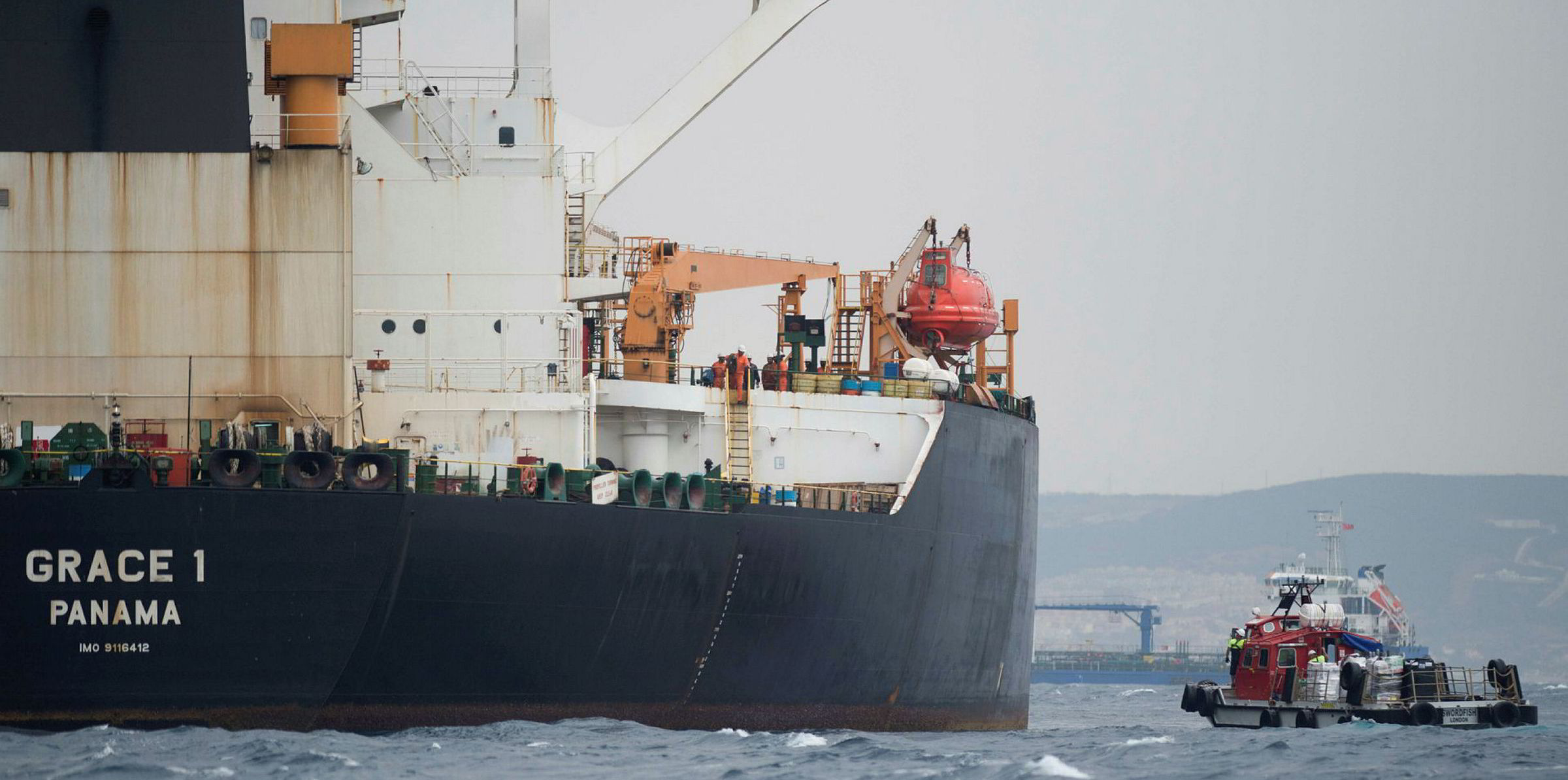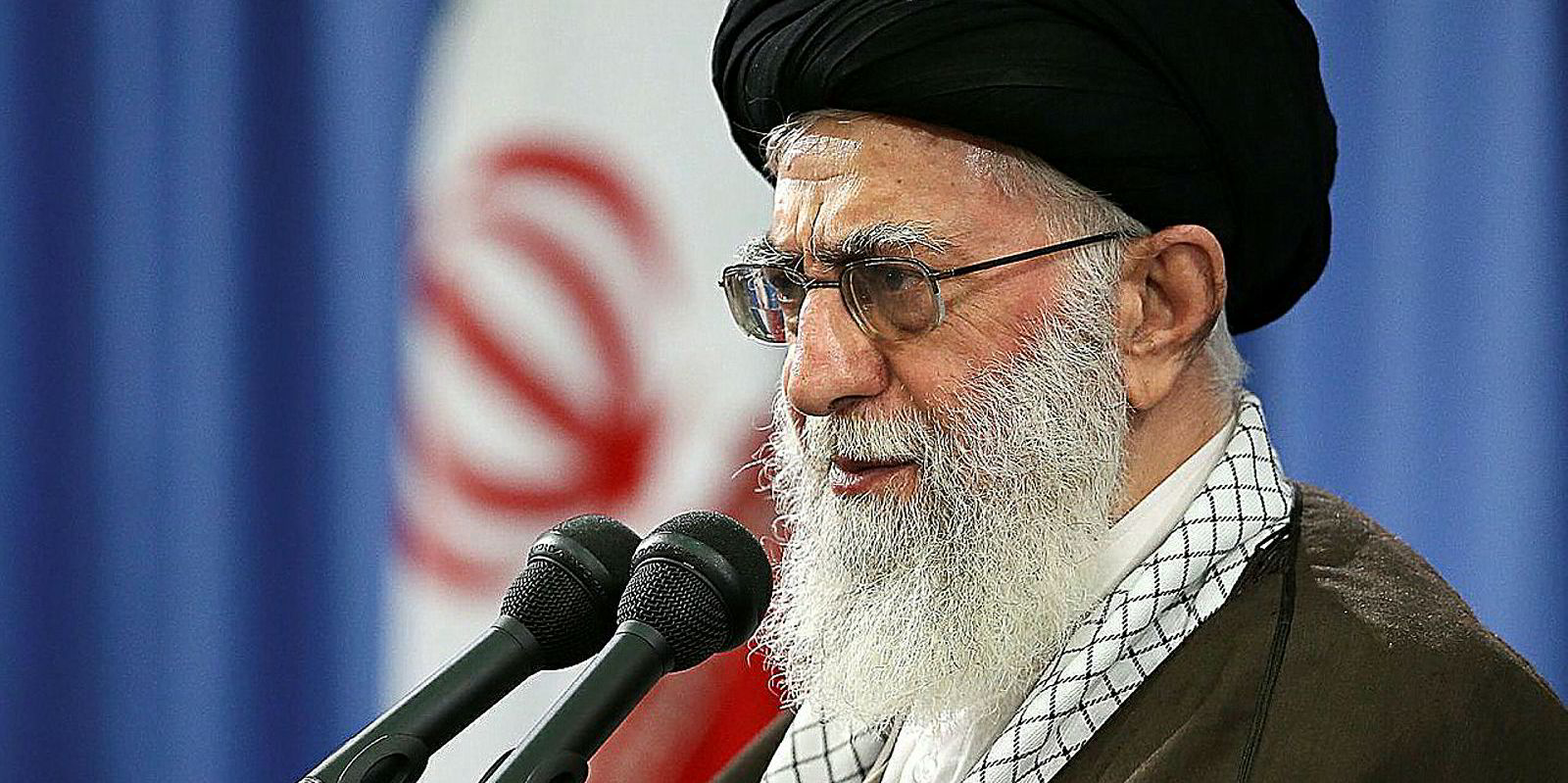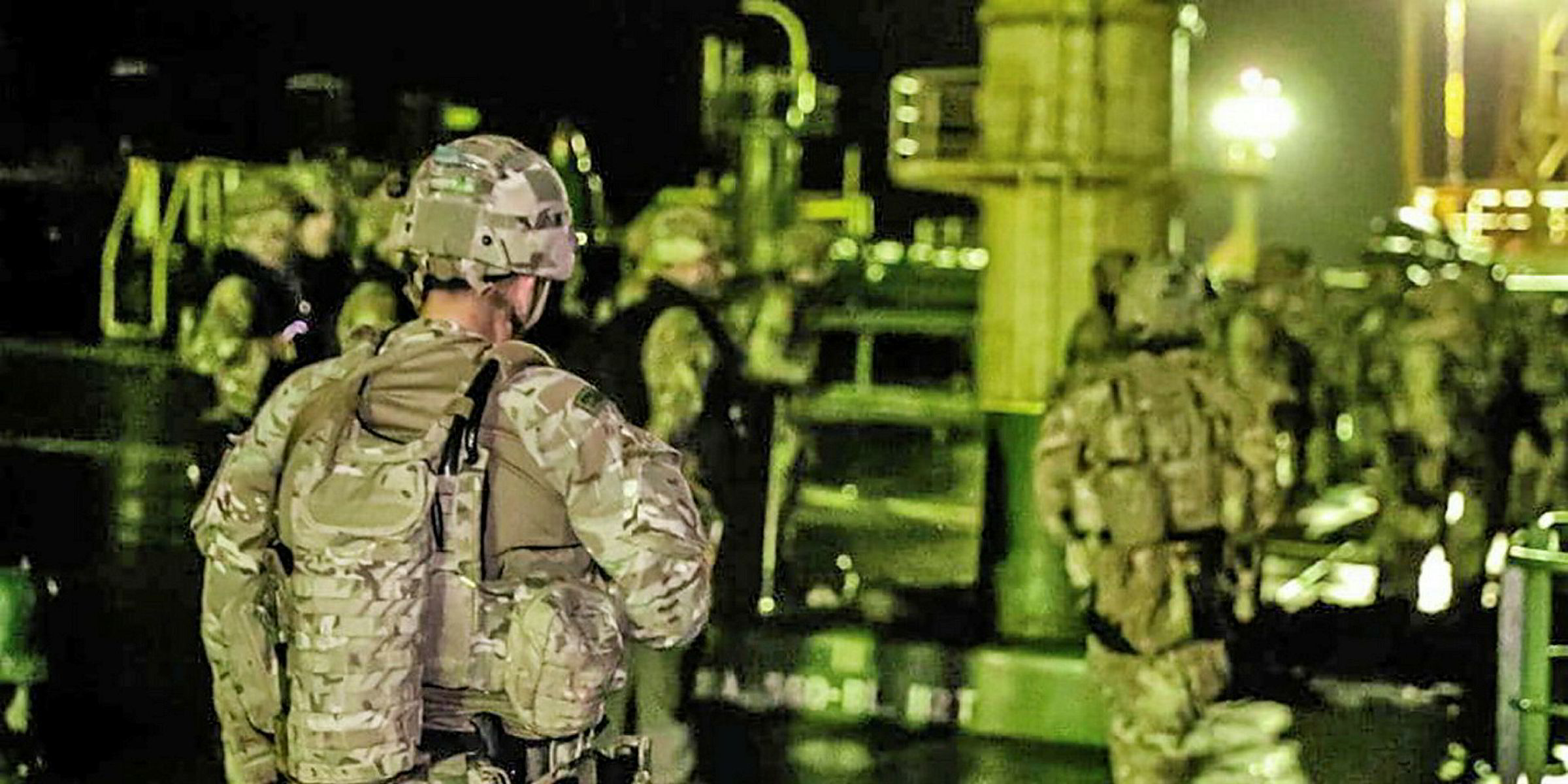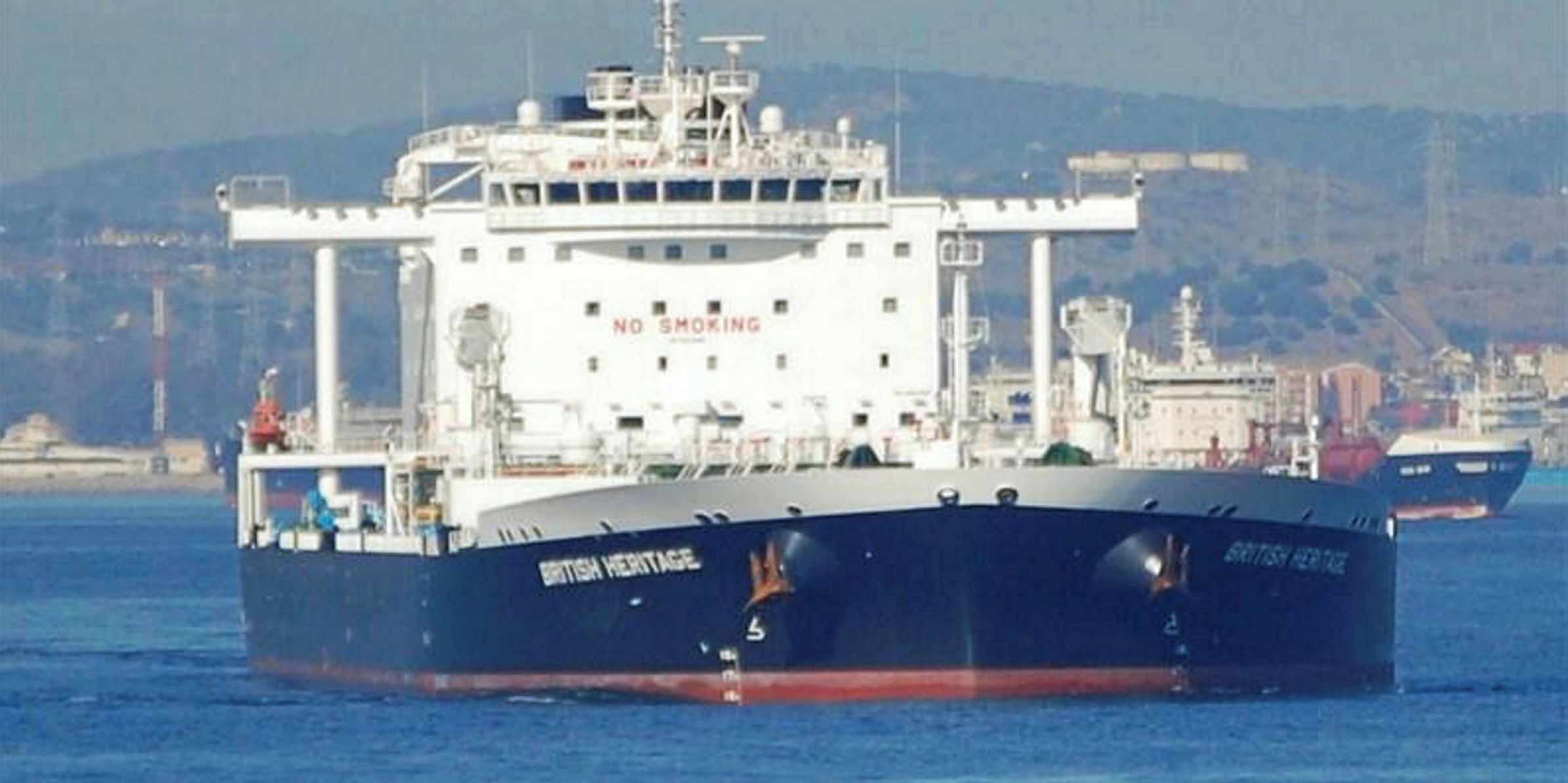Tankers with UK interests are facing heightened operational risks and higher insurance premiums, having been dragged into simmering geopolitical tension in the Middle East.
Those ships owned by British firms and flagged in the UK, a British Overseas Territory or a British Crown Dependency could be targeted by the Islamic Revolutionary Guard Corps (IRGC) when operating in the Middle East Gulf, the world’s most important oil export region, according to industry officials.
Safety measures
Some shipowners have taken precautionary measures. MOL-operated vessels flagged in the UK, Isle of Man and Cayman Islands have been ordered to “sail as far as possible from Iranian waters” when passing through the Strait of Hormuz, the Japanese shipping giant revealed.
A London-based owner also told TradeWinds that it had taken extra safety measures, but refrained from going into details due to the matter’s sensitivity.
Munro Anderson, a partner at risk consultancy firm Dryad Global, said: “This risk manifests ... principally in the form of the potential for interference by IRGC Navy vessels.
“Iran has been engaging in posturing and a show of force, which is not uncommon behaviour for Iran and the IRGC Navy.”
Any UK-interest vessels with significantly low freeboard and/or those found drifting, displaying minimal mitigation measures, or without escort are likely to be at heightened risk of opportunistic targeting
Munro Anderson, partner at Dryad Global
The UK has put British ships operating in the Middle East Gulf on the highest alert — Maritime Security Level 3 of the International Ship and Port Facility Security Code — which underscores the heightened risk of Iranian navy force boarding and detaining vessels with UK interests.
Hikes in premiums
Tension has flared between Iran and the UK after British Royal Marines seized the 301,000-dwt VLCC Grace 1 (built 1997) off Gibraltar in early July on suspicion of shipping Iranian oil to Syria.
Last week, the UK's Ministry of Defence said three Iranian vessels sought to block the passage of the BP-operated, 158,277-dwt tanker British Heritage (built 2017) through the strait. The UK Royal Navy’s warship HMS Montrose had to train its guns on the boats to warn them off, according to US and UK officials.
Lars Gustafson, managing director of insurance broker Arthur J Gallagher’s US marine practice, said the incident would certainly impact insurance prices.
“Cargoships and oil tankers generally have war-risk insurance policies," he said. "These policies are triggered when an event such as [this] occurs and regions are added to a high-risk list.
“When this happens, underwriters cancel the current war-risk insurance policy and shipowners are able to repurchase the policy for a period of seven days due to the heightened risk. The policy lasts for a seven-day block as the situation unfolds and the policies are more expensive due to the heightened risk.”
Extreme scenario
Further escalation of the tension would have implications on marine insurance. Gustafson said insurers would pay out for a total loss if a ship was unable to leave a port for a period of six months — a possible scenario should Iran close the strait.
An even more extreme scenario would be an automatic cancellation of all shipping policies, if two of the five designated superpowers — the US, UK, France, Russia and China — go to war.
“The extreme scenario would be the US going to war with Iran, with Russia backing Iran,” Gustafson said.
Overall, vessel operations are expected to be affected by the highly dynamic diplomatic situations in the near future.
The latest incidents have followed six tanker attacks near the strait in May and June, for which the US blames Iran.
The extreme scenario would be the US going to war with Iran, with Russia backing Iran
Lars Gustafson
While Gibraltar seized the Grace 1 on the grounds of violating European Union sanctions, Brussels — contrary to the US position — is looking to keep Iran in a nuclear deal in efforts to de-escalate regional tension.
“EU negotiations continue and the situation with regards to the detention of the Grace 1 is still evolving," Anderson said. "This is a dynamic situation and Iran will act according to what it perceives are its greatest levers of influence.
“If diplomatic solutions do not yield results, the risk of incident will increase dramatically.
“Any UK-interest vessels with significantly low freeboard and/or those found drifting, displaying minimal mitigation measures, or without escort are likely to be at heightened risk of opportunistic targeting.”
Royal Navy escort
The Royal Navy has been escorting a select number of vessels through the strait. Other than the British Heritage, the 302,303-dwt Atlantic Pioneer and 302,290-dwt Pacific Voyager (both built 2009) — two MOL-operated VLCCs flagged in the Isle of Man — were also accompanied by the HMS Montrose earlier this month after the Japanese operator notified the UK Maritime Trade Operations as per standard procedure.
The UK is deploying the HMS Duncan to the region as the HMS Montrose is due for periodic maintenance, which suggests the escort operation will likely continue. However, resource constraints mean not all UK-interest ships would receive protection.
While suggesting that naval convoys should be sought whenever possible, Anderson said: “The Royal Navy is ... severely limited in its ability to project power throughout the region, as a result of considerable cuts to resources.”
Anderson suggested the measures for Maritime Security Level 3 should be implemented in full for vessels that need to operate in the region, with all crew and commercial entities fully appraised of procedures and processes.
“The situation remains fluid and, as such, the best mitigation remains avoidance,” he said.










